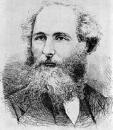| |

Home
Overview
Instructors
Course Info
Communications
Calendar
Notes
Videos
Problem Sets
Zoom
Email
Slack
|
|
|
|
PHYS 415: Electromagnetic Theory I
Prof. S. Teitel: stte@pas.rochester.edu ---- Fall 2023
Problem Set 9
Due Friday, December 1, uploaded to Blackboard by noon
- Problem 1 [15 points]
Consider as a very simplified model for the dielectric function
(This is the model discussed in lecture in the limit that the damping force vanishes.) Assume ω0 < ωp.
a) [5 pts] Using the dispersion relation k2 = ω2ε(ω)/c2, make a sketch of k vs ω for electromagnetic wave propagation.
b) [5 pts] Re-draw this sketch as ω vs k, and show that for each value of k > 0 there are two allowed values (modes) of ω for the electromagnetic waves. Show that at both small k and at large k one of these two modes has a dispersion relation characteristic of an electromagnetic wave in the vacuum, i.e. ω = vpk where vp is only weakly dependent on k. Show that the other mode has a frequency ω that is, to lowest order, independent of k and so like some internal atomic mode of vibration. Show that these two modes exchange their characteristic behavior as one crosses from small k to large k. In this intermediate region the modes have a mixed character and are referred to as "polaritons".
c) [5 pts] Show that, at a given value of k, the higher frequency mode has a phase velocity that satisfies vp > c, while the lower frequency mode satisfies vp < c. Show that for both modes the group velocity always satisfies vg < c.
Hint: you may find it easier to demonstrate part (c) graphically rather than analytically.
- Problem 2 [20 points]
This problem concerns the work done by an electromagnetic wave on a dielectric material as it propagates through the material. You will see that the energy absorbed is determined by the imaginary part of the dielectric function ε(ω).
Consider a bound atomic electron of charge q in a dielectric medium with an atomic polarizability α(ω). The dielectric function is taken to be ε(ω) = 1+4πNα(ω), where N is the density of polarizable atoms. We will take μ=1 . You should not assume any particular form for α(ω) other than that it is complex valued and frequency dependent.
An oscillating electric field E(t) = Re[Eωei(δ-ωt)] exerts a force on the electron. Here we assume Eω is a real valued vector, and δ is an arbitrary phase factor.
a) [3 pts] Show that the velocity of the electron is given by
v(t) = (-1/q)Re[iωα(ω)Eωei(δ-ωt)]
b) [3 pts] Show that the work done on the electron by the electric field, per one period of oscillation (this is just the average power absorbed by the electron) is
(1/2)ωα2(ω)|Eω|2
where α2(ω) = Im[α(ω)] is the imaginary part of the polarizability. [Hint: Be careful to work with the real valued forms, rather than the complex exponetial expressions. You always have to be careful about this when taking the product of two such oscillating quantities.]
c) [5 pts] Consider an electromagnetic wave traveling in the +z direction. The electric field of such a wave has the form
E(z,t) = Re[Eωe−k2zei(k1z−ωt)] = Eωe−k2zcos(k1z−ωt)
where k = k1 + ik2 is the complex wavenumber, determined from the complex dielectric function ε(ω) by
k2=(ω2/c2)ε(ω).
Assume the material has a cross-sectional area A in the xy plane, and is semi-infinite in the z direction from z=0 to z→∞. Using the form above, and the result in part (b), compute the total work per unit cross-sectional area, per period of oscillation, done by the electromagnetic wave on the material. This is the total energy per unit area, per period of oscillation, lost by the wave in traveling through the material. Show that it is equal to
(1/16π)(ω/k2)ε2(ω)|Eω|2.
d) [5 pts] We showed the that magnetic field asociated with the electromagnetic wave in part (c) is given by
B(z,t)=(c|k|/ω)(z×Eω)e−k2zcos(k1z−ωt+φ)
where z is the unit vector in the +z direction, and the phase shift φ is given by tan(φ)=k2/k1. Construct the Poynting vector for this electromagnetic wave, S = (c/4π)E×B. Show that the total energy per unit cross-sectional area, per period of oscillation, which flows into the material through the plane at z=0, is just equal to the total work done on the material as computed in part (c). [This is to be expected since as z→∞ the amplitude of the wave decays to zero, and so all the energy entering the material must ultimately be dissipated doing work on the material!]
e) [4 pts] Show that for a frequency in the region of total reflection, the total work done on the material is zero.
|
|